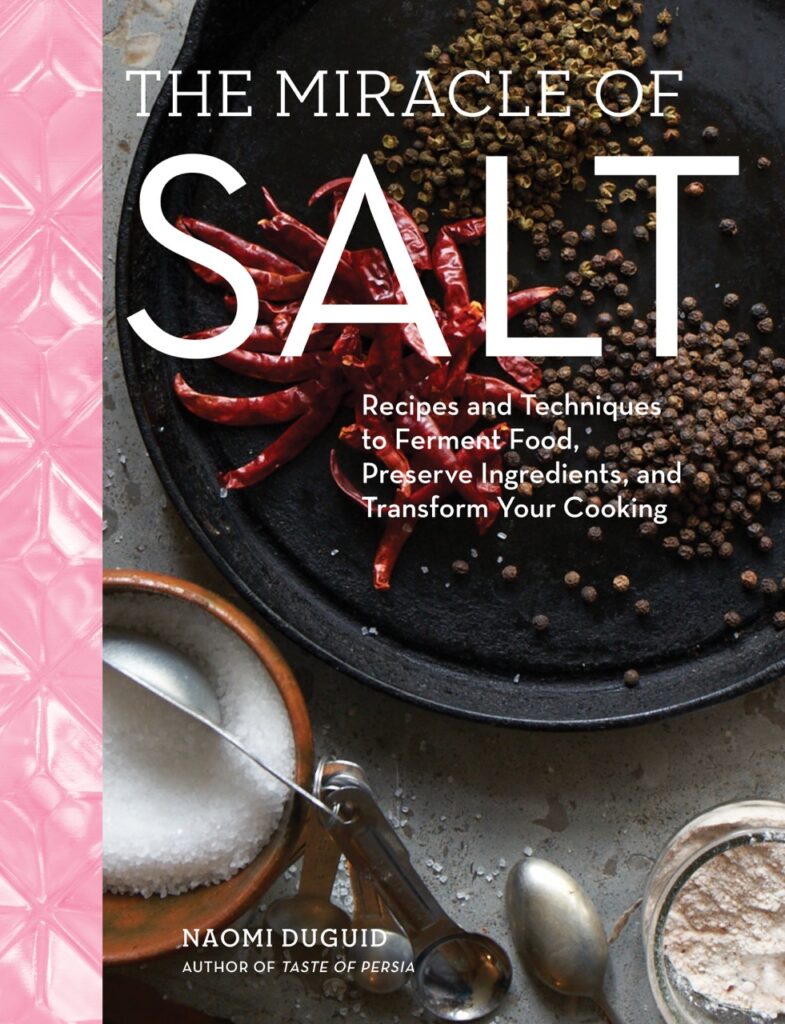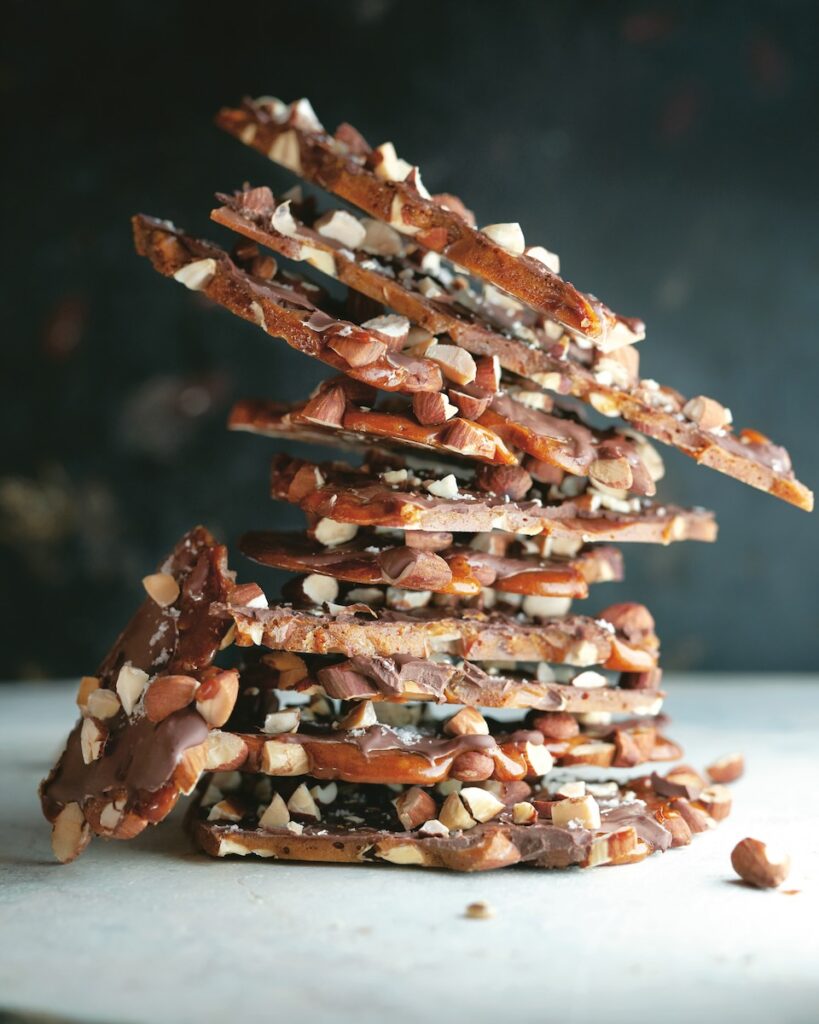You eat it every day. It’s essential for cooking, and can mean the difference between a dish that is ho-hum and one that sings. But how much do you really know about salt? Naomi Duguid, author of The Miracle of Salt, shares the essentials on salt and how to get the most out of it.

How to Use Salt in Cooking
The salt we eat and cook with is a simple compound, sodium-chloride (written NaCl in chemistry), that sometimes contains traces of other elements as well. Humans and warm-blooded animals depend on salt for survival. Our bodies need it; we cannot live without it. Even so, for most of us salt is an inexpensive grocery store item that we take for granted.
The amount of salt we need to eat each day is small, about 1 teaspoon, though most of us consume more. Salt gives us pleasure by bringing out the flavors of our food and it’s a useful tool in the kitchen. Throughout history humans have depended on salt to help with food preservation: meat, fish, legumes, and vegetables can be safely stored for the lean times by salt-drying, fermenting or pickling.
Where Does Salt Come From?
All salt originated in the ocean. (Seawater is on average about 3.5% salt – that’s about 2 tablespoons salt per quart.) Much of the salt that we consume comes from underground salt deposits laid down long ago by ancient seas; the rest is evaporated directly from seawater and labeled as sea salt.
In the last few years many kinds of specialty salts from all over the world have started to appear in grocery stores: kosher salts, sea salts, flake salts, colored salts. It’s labeled according to source, the way it’s processed, crystal shape, and use.
Salt Categories
Refined Salts
Most of the salt we consume is refined pure white salt, cleaned of all impurities. It may be labeled sea salt, kosher salt, pickling salt, or table salt.
Unrefined Salts
These include flake salts (fleur de sel and others) that are produced by evaporation with little or no further processing, as well as colored salts like grey salts from Brittany and Korea, and Himalayan pink salt.
Table Salt
The most commonly available salt, table salt has been processed into very fine grains and iodized. It often contains anti-caking agents to ensure it flows freely.
Sea Salt
Harvested from sea water by evaporation (either solar evaporation or boiling over heat), sea salt may be refined or unrefined, and sold as coarse, fine, or flake salt.
Flake Salts
This is the term for large flat salt flakes, some labeled by the French term “fleur de sel,” that are produced by slow, often solar, evaporation. They crystalize on the top surface of the brine and are skimmed off. Because of the labor involved and the fragility of the crystals, they are often more expensive than other salts. Best used as finishing salts, sprinkle on just before the food is served. The most famous are Maldon salt from Essex in England, and fleur de sel from Brittany.
Colored Salts
Himalayan pink salt has become the best-known colored salt. Apart from its distinctive color, it is said to contain tiny amounts of trace minerals. Grey salt from Brittany is prized for magnesium and other trace minerals it contains. Black salt from India or Pakistan has a distinctive sulfurous aroma and is believed to have healthy properties.
Flavored Salts
For the last fifteen years there’s been a surge of interest in flavored salts infused with other ingredients, from smoke to powdered chile, lemon or herbs. Often decorative, most contribute a hint of extra flavor to food when added toward the end of cooking or as a finishing salt.
Kosher Salt
Specially designed for koshering, that is for drawing blood out of meat (though this process does not meat kosher), kosher salt is refined and processed into identical medium-sized flakes. It’s a favorite of chefs thanks to its larger grains, making it easier to pick up with the fingers.
Pickling Salt
This refined salt is processed to either fine or medium-sized grains (labeled coarse pickling salt). I rely on coarse pickling salt rather than kosher salt for most of my kitchen salting.
When and How to Salt
When and how you salt affects both the flavor and texture of what you’re cooking. Salting before and during cooking enables the seasoning to be absorbed into your ingredients and can help tenderize meat. Salt added late, just before serving, has more impact on the tongue when you food hits your mouth. Flake salts are usually used as finishing salts and sprinkled on as food is served. Their delicate flat crystals deliver a slight crunch and a direct hit of salt that melts in the mouth.
Salting Cooking Water for Pasta, Potatoes, Vegetables
Bring the water to a rolling boil, then add about 1 tablespoon salt per quart of water. The food will absorb seasoning as it cooks.
Salting Dried Beans
Once your pot of beans comes to a boil, add about 2 teaspoons salt per quart of water; this will help shorten the cooking time. The cooked beans will be lightly seasoned and then you can adjust the seasoning further after cooking.
Salting a Slow-Cooked Dish (Soups, Stews, Casseroles)
As a rule of thumb, add half the salt during the long slow cooking, so ingredients absorb seasoning as they cook, and the balance shortly before serving.
Salt Rubs
Salt-rub steak or whole chicken before cooking to season the interior of the meat and help create a surface crust during cooking.
Pantry Salt Staples
I use generic refined sea salt for salting my cooking water because it dissolves quickly, and coarse pickling salt for most other kitchen tasks. Like kosher salt, pickling salt is easy to pick up in my fingers, and it’s much less expensive.
Specialty salts are a pleasure to have around, but there’s no point using them during cooking, for their specialness disappears once they are dissolved in water. I keep about three flake salts in circulation to sprinkle on food just before serving, and to put out on the table for guests who wish to add salt.
You might want to buy a few different flake salts from a variety of places, say salt from one or two of the many American specialty producers, a fleur de sel from Brittany, and perhaps another one or two from other places. Tasting different specialty salts is a fun way of exploring the world.

About the Author
Naomi Duguid is a writer, photographer, and passionate traveler. Her book The Miracle of Salt: Recipes and Techniques to Preserve, Ferment, and Transform Your Food is published by Artisan.
Get started on your salt journey with Naomi’s recipe for Salted Almond Chocolate Brittle.

Check out the rest of our food education series:
- Everything You Ever Wanted to Know About Olive Oil
- Knowing Spices Can Completely Change Your Kitchen Game
- Dress Up Any Dish with Herbs
Or, for another way to expand your epicurean horizons, pour a drink of choice and get yourself some liquor education:
- All About Gin
- Get to Know Japanese Whisky
- Vodka Isn’t Just for Shots and Soda
- The Best Bottles of Tequila Blanco
Story by Naomi Duguid
Styling by Anna Franklin
Photography by Dave Bryce
Subscribe to TABLE Magazine‘s print edition.
